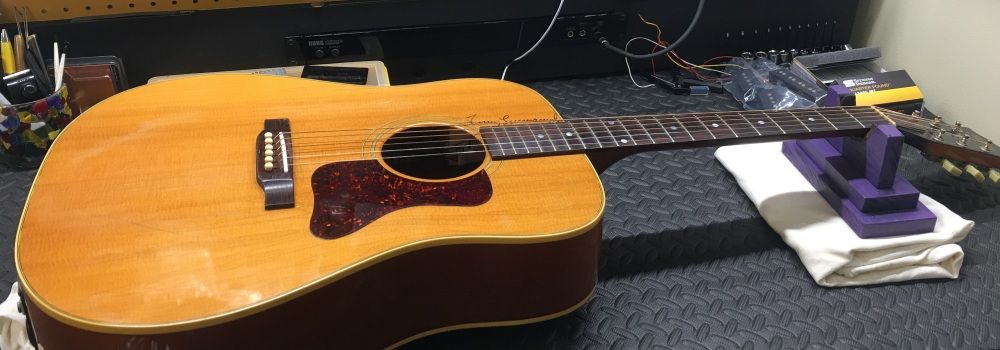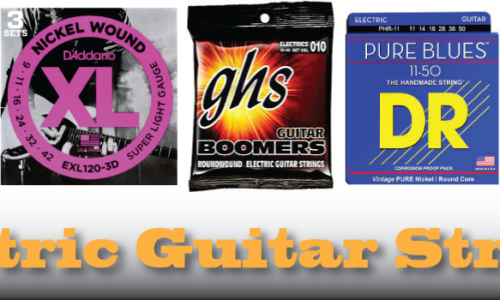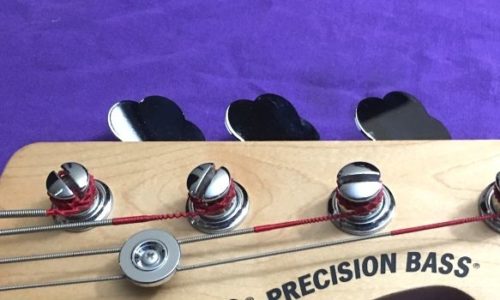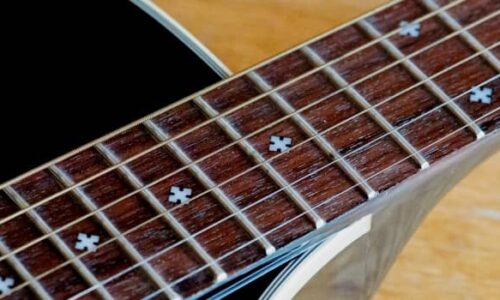Acoustic Guitar Tonewood

Acoustic Guitar Tonewood
Learn about the types of wood used for acoustic guitars. Explore tonewoods and their affect on sound, playability, durability and value of your guitar.
About Choosing the Right Guitar for You
How do you find the right or best acoustic guitar? Google searches can give you some information but can’t really tell you which guitar is right for you. You need to define your own needs, wants, and boundaries. This is usually as simple as knowing your budget and finding guitars in your price range with great reviews. The thing to keep in mind about reviews is very few reviews are written by truly knowledgeable people. Some reviews are written by dealers, distributors or other people with a vested interest in promoting a particular brand. You should do your homework, develop a list of guitars of interest, and try them out in-person.
This article will give you unbiased information to help you understand the characteristics of woods used for acoustic guitars. Beyond the wood you need to consider the brand’s reputation, the country where it was manufactured, and the price.
The type of wood used to build an acoustic guitar is a key indicator as to the quality of the instrument. For a beginner, the wood is not a big deal simply because the first order of business is learning to play. As you develop skills you will discover that certain woods, and better craftsmanship, serve to produce superior tone and sound. This article will help you to better understand acoustic guitar woods and what it means for you as an owner and player.
Many types of woods acquire different names which make them sound exotic or higher quality. An example is “Eastern Mahogany”, also marketed as “Nato”, which are collective names for the wood of the Mora tree.1 If you value the tonal superiority of the types of wood for acoustic guitars you should take time to learn a bit more about the common wood species and their characteristics.
What about resin based materials
Plastic guitars. Leave it to mass-production minded companies to bring plastic resins into guitar building. Forming instruments from resins means lower costs, but does it mean lower quality? Can machines produce guitars that are better than those made by a skilled luthier? An article published in the Leonardo Music Journal stated, “Even thought the sonic representation of plastics as an instrument construction material is not high, guitar makers usually accept that some alternative materials to wood can be viable”.2 The abstract of the article states, referring to aresearch project, “participants are found unable to distinguish much beyond a 50% success rate whether sound originates from wood or polymer acoustic guitars. The findings challenge deeply rooted ideas about traditional material-instrument relationships and champion the use of design as a driver for instrument innovation and artistic engagement.”
How can the average person tell the difference from a plastic guitarand a real guitar? If you find a guitar find described with terms such as synthetic, polymer, polycarbonate, graphite-composite, non-celluloid and more you’re dealing with forms plastic resins.
Beyond Species: The Finer Points of Wood Quality
The properties and characteristics among various types of woods is substantial. Within any given species there are variances in density, grain, etc. Most notably, there is a huge quality difference in heartwood and sapwood.
The differences in the wood used will directly impact both the visual and tonal quality of any guitar. From where in the tree the wood is cut, its thickness, age, and other factors are reasons that several guitars can all use the same type of wood yet do not sound quite the same.
What are Common Types of Wood for Acoustic Guitars?
There are numerous wood species used in acoustic guitar construction. The most common woods are varieties of Mahogany, Spruce, Cedar, Rosewood and Maple. Manufacturers and luthiers choose woods based on availability, cost and the anticipated quality of the finished guitar.
Generally, hardwoods are used for acoustic guitar framing, sides, back, neck and fretboard. Softwoods that are relatively stiff with tonal potential are preferred for tops of acoustic guitars.
Cedar
Cedar, less dense than Spruce, is a qualiy wood for acoustic guitar building. Luthiers profess that Cedar has fairly rich, warm overtones that is a little short on sparkle.3
Koa
Koa is a very dense hardwood that manages tones much like mahogany. It is often used for sides and backs to provide both great tone and durability. The tonal quality of Koa is why it was used in the high-end BC Rich Mockingbird and Eagle electric basses.4
Mahogany
Mahogany. Just the mention of the name conjures a sense of refinement and quality. Although mahogany is a fine tone wood, there are variances and misrepresentations which need to be understood. What is considered to be true mahogany is South American Mahogany, notably form Honduras and other Central American countries. Due to international laws on harvesting and exporting, woods with similar (not the same!) charachteristics are unscrupulously marketed as Mahogany. These woods include African Mahogany, Cuban Mahogany, Phillipine Mahogany, Sipo, Sapele, and others.
In guitar building, denser mahogany offers a rich tonal quality that enhances both treble and bass more than other woods. Mahogany is ideal for guitar tops, backs, sides and necks. 5
Maple
Maple is a heavier, solid wood which is known for transferring tones in pure form with minimal tone changes applied from the wood itself. Maple is often used for back and sides. Maple offers some stunning grains and patterns commonly referred to as curly, tiger, flamed, rippled, birdseye, fiddleback,and wavy.6
Nato (Eastern Mahogany)
Nato is a contemporary name for wood from the Mora tree. Because it can be finished to look like mahogany it is often sometimes marketed as “eastern mahogany”. Nato/Mora/Eastern Mahogany is not true mahogany. This wood has varying color shades and a straight to interlocked grain. The heartwood is a reddish brown while the sapwood is light brown to yellowish.7
Sapele
Sapele is a tone wood that is marketed as being like Mahogany. While it does share some tonal charachteristics, it leans more toward the high-end. It’s an acceptable substitute for finding a Mahogany type tone at a lower cost. The visual appearance of Sapele falls far short of Mahogany.8
Spruce
Spruce is a widely used wood used in building acoustic guitars. The two common varieties are Sitka Spruce and Red Spruce. Both varieties are sturdy, lightweight and perform well in a utilitarian sense. Spruce provides a powerful and clear tonal quality. Spruce is a decent wood and often used on mid-range and some lower-end acoustic guitars. Some suppliers offer lesser known varieties of Spruce including Lutz Spruce, Adirondack Spruce, White Spruce, and Englemann Spruce.9
Rosewood
Rosewood is a very popular wood among luthiers building all types of stringed instruments. The two primary varieties are the premium Brazilian Rosewood and the good but lesser Indian Rosewood. The Brazilian variety deftly delivers a nice top-end and a plush low-end. The Indian variety is at its best with mid-range tones.10
What is the Best Wood for an Acoustic Guitar?
Every time we hear the best anything we roll our eyes. In reality, that term is highly subjective. What constitutes the best is relative to your personal beliefs, opinions and preferences. Generally speaking, trust the manufacturer or luthiers to choose the materials. Find an acoustic guitar made by a trusted guitar builder (brand or luthier) that is within your budget. Play each one and choose the one that you like. And seriously, don’t get too caught up in making decisions based on online reviews – people can post reviews and have no real understanding of the subject.
The Future of Acoustic Guitar Building: Woods, Composites and Materials
As society develops there is an increasing awareness of managing natural resources. This cultural development reaches into the guitar building trade. If you want a solid wood guitar, you may find it’s an easier task now versus later. To put it in perspective, a recent article at AcousticGuitar.com stated, “supplies of premium tonewoods have been diminishing due to increased demand, land development, and poor forest management. That’s led to the use of sustainable woods for more than a decade, Martin Guitar, for example, has offered models built with woods certified by the Forest Stewardship Council (FSC). In response to this unfortunate, but predictable, situation, but partly out of pure experimentation, builders also have sought alternative tonewoods, or, in some instances, they’ve used such synthetics as carbon fiber”.11
In Summary
Certainly the types of wood used in guitars contributes to quality. If you’re looking for a quality acoustic guitar, go beyond appearance and learn about the materials used in the guitar you want to purchase. Select a guitar using the best types of wood and enjoy a great sounding acoustic guitar.
To learn more about woods used for acoustic guitars, visit the websites at the links below.
FOOTNOTES
- 1 Wikipedia, “Nato Wood”, November 27, 2015, Available from Wikipedia
- 2 Owain Pedgley and Eddie Norman, “Materials Innovation in Acoustic Guitars: Challenging the Tonal Superiority of Wood”, 2012, Available from Leonardo Music Journal
- 3 Wikipedia, “Cedar”, October 31, 2019, Available from Wikipedia
- 4 Wikipedia, “Koa”, October 19, 2019, Available from Wikipedia
- 5 Keith Stephens, “Mahogany: Which one is the real thing?”, September 12, 2010, Available from Woodworkers Source
- 6 Vermont Woods Studios, “Maple Wood”, August 23, 2019, Available from Vermont Woods Studios
- 7 Wikipedia, “Nato / Mora”, September 30, 2019, Available from Wikipedia
- 8 Wikipedia, “Sapele”, June 23, 2019, Available from Wikipedia
- 9 Jimmy Leslie, “Spruce”, November 15, 2019, Available from GuitarPlayer.com
- 10 Wikipedia, “Rosewood”, October 17, 2019, Available from Wikipedia
- 11 Adam Perlmutter, “A Tonewood Primer: How to Pick the Right Materials for Your Optimal Sound”, August 30, 2016, Available from AcousticGuitar.com




What do you think of the types of wood coming from India and Indonesian forests?
I recommend buying an older guitar, and a decent brand because they are built better. They are all wood, typically spruce top with mahogany back and sides. Be wary of new guitars with cheap laminates that look like real wood, or guitars made from cheap woods that are not controlled by environmental regulations. To buy a guitar with good tonewoods it doesn’t have to be a Taylor or Martin. An older Yamaha, Alvarez, or Fender acoustic guitar will play nicely and may cost you under $300.
Do you think tonewood really matters when you have a preamp to run the sound through an amp? If you can adjust the amp does the wood make a difference?
I love the tones of old acoustic guitars with mahogany bodies. There’s just something about how the wood ages that makes a guitar sound so good.
Interesting information! So good to discover somebody with some original thoughts on this topic.
since so many guitars now use laminates do you think wood acoustic guitars will increase n value?
It’s good to find an article that informs people to look beyond the shiny finishes and consider the true importance of materials used to make a guitar. These modern laminates and inferior wood types may keep prices lower but the sound is not (and never will be) truly good.
Does age really affect the sound of an acoustic guitar? Would humidity matter?
Mahogany for the body is the only way to go. Ideally, you can buy a guitar at least 15 years old and experience the beautiful tone of a seasoned tonewood.